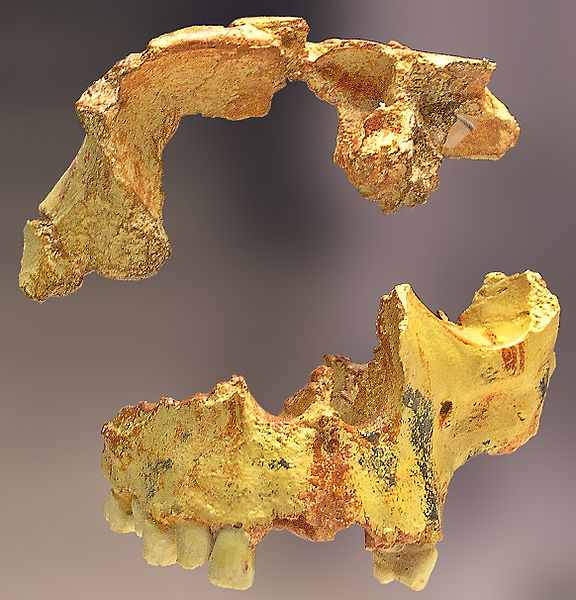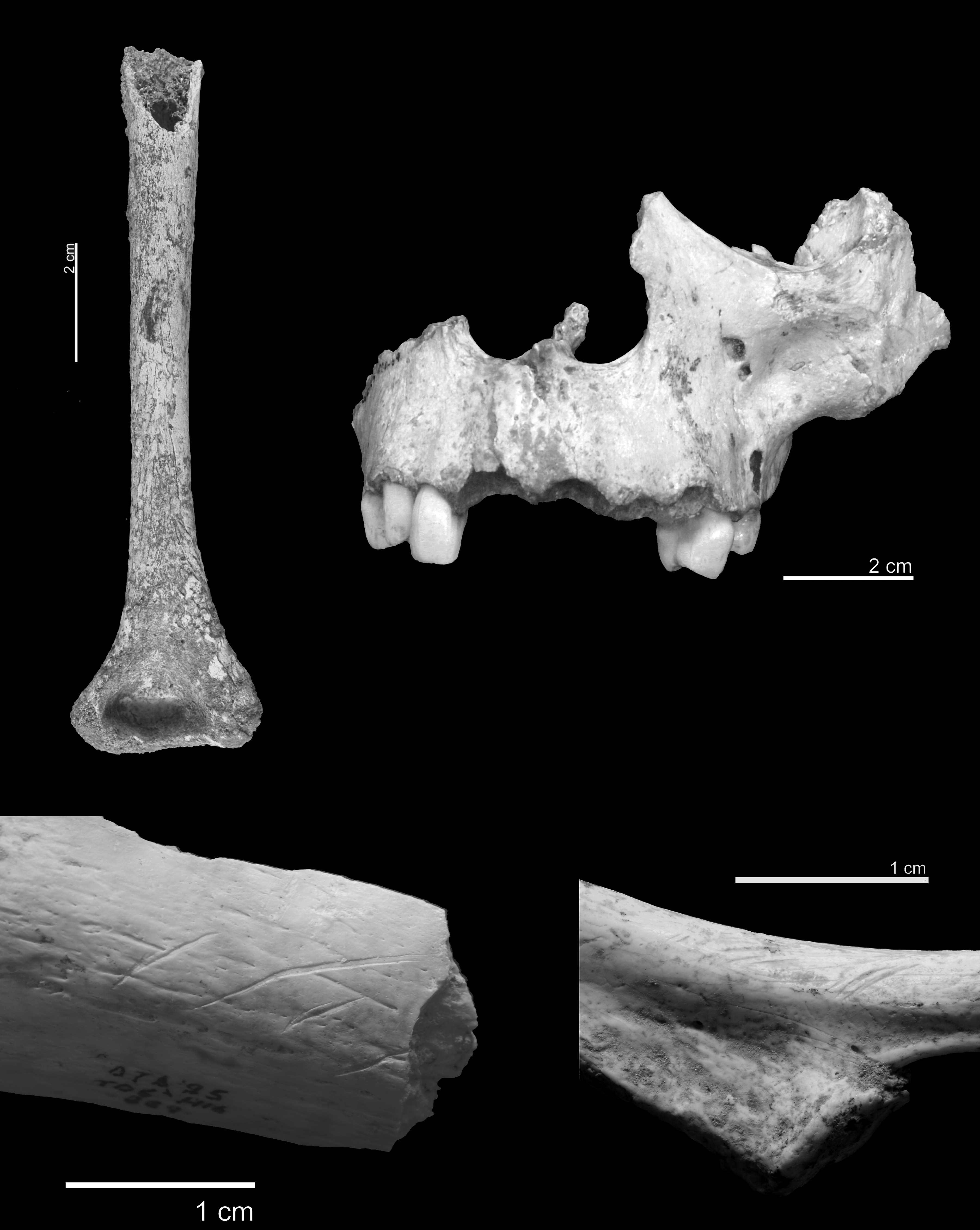Homo antecessor is an extinct human species (or subspecies) which dates from 1.2 million to 800,000 years ago and is one of the earliest known human varieties in Europe. The only known fossils of H. antecessor are from two sites in the Sierra de Atapuerca region of northern Spain (Gran Dolina and Sima del Elefante) and one site in Norfolk, England. The best-preserved fossil is a maxilla that belonged to a 10-year-old individual found in Gran Dolina, and numerous humanoid remains at the site exhibit cuts where the flesh has been flensed from the bones, indicating that Homo antecessor practiced cannibalism.
In an August 31 National Geographic Daily News article titled “Human Meat Just Another Meal for Early Europeans?” James Owen comments: “For some European cavemen, human meat wasn’t a ritual delicacy or a food of last resort but an everyday meal, according to a new study of fossil bones found in Spain. And, it seems, everyone in the area was doing it, making the discovery ‘the oldest example of cultural cannibalism known to date,’ the study says. The 800,000-year-old butchered bones from the cave, called Gran Dolina, indicate cannibalism was rife among members of western Europe’s first known human species, Homo antecessor. The fossil bones, collected since 1994, reveal that ‘gastronomic cannibalism’ was commonplace and habitual—both to meet nutritional needs and to kill off local competition, according to the study, published in the August issue of Current Anthropology. The cannibalism findings are based on leftover bones bearing telltale cut and impact marks, apparently from stone tools used to prepare the cave meals. The butchered remains of at least 11 humans were found mixed up with those of bison, deer, wild sheep, and other animals, said study co-author José Maria Bermúdez de Castro. As well as de-fleshing marks and evidence of bone smashing to get at the marrow inside, there are signs the victims also had their brains eaten.”
The study concludes by stating: “So, anthropophagy was an integral part of the way of life of these hunter-gatherers. The goal of these people would have been to obtain meat from a broad taxonomical variety of resources; H. antecessor would have been included among those resources. This drift from simple ethological activities to the cannibalistic behavior of the H. antecessor species would have been closely related to their subsistence system. These societies would have had some degree of socio-structural complexity. Cannibalism would have been integrated into their cultural context as a response to a variety of different possible situations. In conclusion, about 1 million years ago, the hominids of level TD6 added cannibalism to their set of survival strategies as a way of competing with other human groups for available resources. This practice, accepted and included in their social system, is the oldest example of cultural cannibalism known to date. Over time, this behavior would take on more complexity and assume abstract and symbolic concepts lacking in the TD6 record.” To put it mildly…
“I have been assured by a very knowing American of my acquaintance in London, that a young healthy child well nursed is at a year old a most delicious, nourishing, and wholesome food, whether stewed, roasted, baked, or boiled; and I make no doubt that it will equally serve in a fricassee or a ragout.” Jonathan Swift, “A Modest Proposal – For Preventing The Children of Poor People in Ireland From Being A Burden to Their Parents or Country, and For Making Them Beneficial to The Public,” 1729
Article by Bill Norrinton




